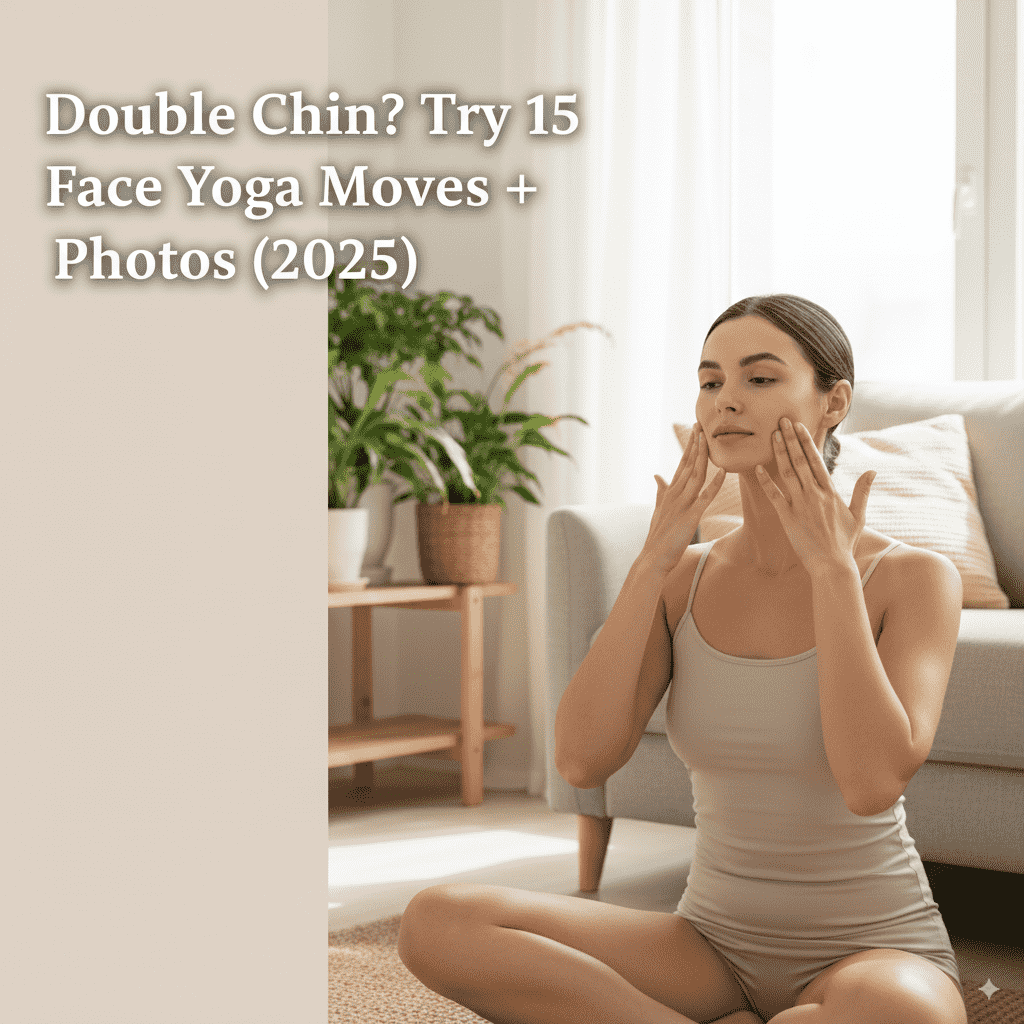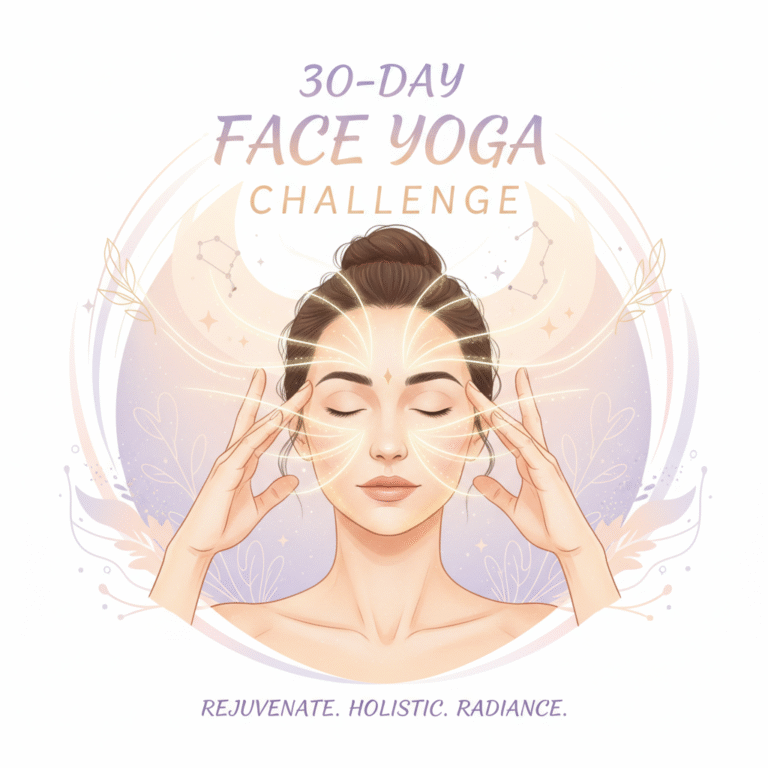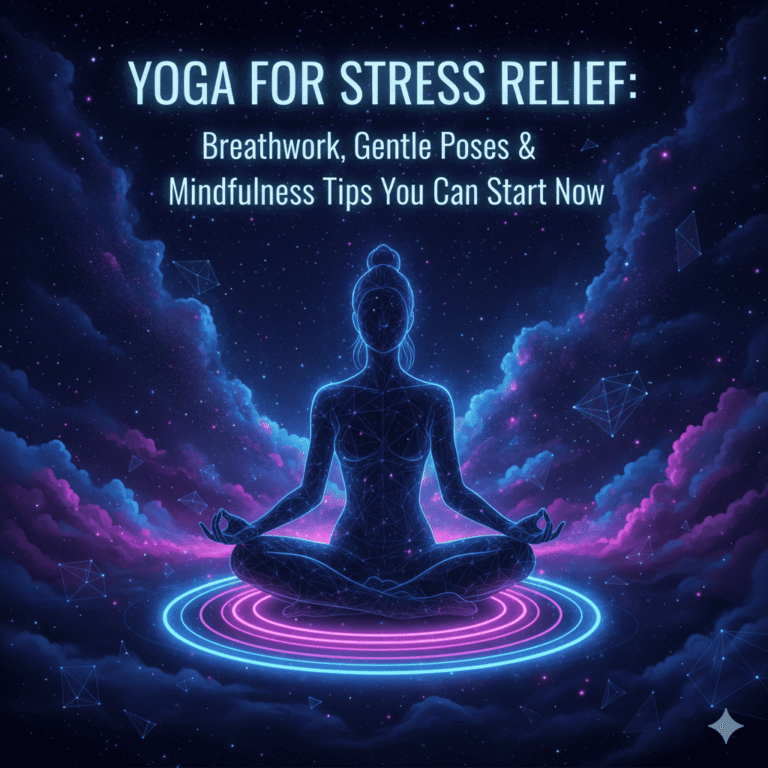
Looking for a practical routine that can help sculpt the lower face, refine the jawline, and support skin health through massage and muscle control using face yoga consistently over weeks. Early research and expert guidance suggest modest but meaningful improvements when the routine is practiced regularly, tracked with standardized photos, and combined with mindful safety techniques.
What face yoga is
Face yoga is a non‑invasive approach combining targeted movements, massage, and acupressure designed to tone facial and neck muscles, improve circulation, and support relaxation as part of structured facial exercises. It borrows principles from physical training and lymphatic care to promote a lifted appearance and healthier glow while complementing rather than replacing medical aesthetics.
Does it work? Evidence and limits
A JAMA Dermatology pilot trial reported that a 20‑week regimen improved upper and lower cheek fullness and reduced estimated facial age by nearly three years in middle‑aged women who practiced diligently. Researchers emphasized a small sample size and no control group, so expectations should remain realistic, with results dependent on adherence, technique, and baseline anatomy.
Before/after: timelines and tracking
Most users who respond notice subtle changes between weeks 6 and 10 when sessions last 20–30 minutes most days and focus on controlled holds with smoothing counter‑pressure. Track baseline, week‑4, week‑8, and week‑12 photos under identical lighting and angles to evaluate progress for face yoga for jawline outcomes without bias.

Safety first
Perform movements slowly with fingertip support to avoid imprinting dynamic lines and stop any technique that causes pain, strain, or excessive creasing during face exercises for wrinkles routines. Those with TMJ issues, recent cosmetic procedures, neck pain, or active skin concerns should begin gently and consider clinician guidance before advancing intensity.
Daily setup and habit cues
Sit tall with a long spine, relaxed shoulders, and nasal breathing, and use a few drops of face oil for massage‑based strokes to minimize drag and irritation during yoga exercises for face and neck sessions. Consistency matters more than timing, so anchor practice to a morning or evening routine for 15–25 minutes per day across the first 6–8 weeks.
The 15 daily moves (how‑to)
- Posture and breath reset: Spine tall, jaw unclenched, 5–6 diaphragmatic breaths to downshift baseline tension and prime muscle control.
- Jawline lengthener: Turn head slightly right, lift chin subtly, hold 10–15 seconds, breathe evenly, then switch; avoid neck overextension.
- Tongue‑to‑palate press: Press tongue up and slightly forward for 10 seconds, repeat 5–8 times to engage the submental area without puckering.
- Chin scoop: Glide jaw gently forward and slightly up as if “scooping,” hold 5 seconds, repeat 8–10 times with a long neck and relaxed shoulders.
- V‑jaw sculpt massage: Trace from chin to ear with index/middle fingers, medium pressure, 6–8 passes per side to assist lymphatic flow.
- Cheek lifter hold: Closed‑lip smile, lift apples of cheeks, smooth with fingertips, hold 10–15 seconds, repeat 5–6 times.
- Cheek pinch‑and‑roll: Light pinches along cheekbones toward temples for 6–8 passes per side to stimulate circulation while avoiding surface drag.
- Smile‑line softener: Closed‑lip smile with fingertip support beside nasolabial folds, 10‑second holds for 6 reps to minimize creasing.
- Upper‑lip control: Lift upper lip from the philtrum without puckering, hold 5 seconds, 8–10 reps with fingertip support around the mouth.
- Brow sweeps: Pinch‑and‑release or sweep along brows with light pressure for 6–8 passes to reduce frown tension without deep wrinkling.
- Frown release: Gentle circular massage between brows for 30–45 seconds, finish with smooth strokes to the temples for relaxation.
- Eye corner lift: Support outer eyes with fingertips, look diagonally up, soft micro‑squint 5 seconds, 8–10 reps to avoid crow’s‑feet creasing.
- Neck length and lift: Slight head tilt back, subtle lower‑lip extension, 5–8‑second holds, 6–8 reps, stopping with any discomfort.
- Jaw massage release: Knuckles glide from the chin along the mandible to the ear for 8–10 passes per side paired with slow nasal breathing.
- Full‑face flush: Gentle upward strokes from midline out at chin, cheeks, brows for a circulatory finish and calm breath cooldown.
Protocol and progression
- In weeks 1–2, keep holds short and reps modest while mastering form, posture, and breath so adaptation builds without irritation.
- In weeks 3–8, increase seconds per hold and passes per massage incrementally while maintaining fingertip smoothing to protect delicate areas.

Double chin focus
Cluster the tongue press, chin scoop, and V‑jaw sculpt back‑to‑back with slow, even breathing for a targeted face yoga for double chin mini‑circuit. Finish with lymphatic sweeps toward the ears and down the neck for de‑puffing while keeping the head and shoulders relaxed.
Wrinkles and smile lines
When tackling dynamic lines, precision matters more than force; use fingertip support and micro‑holds during face exercises for wrinkles rather than aggressive expressions. For smile folds, pair smoothing counter‑pressure with short, gentle holds to build control during facial exercise for smile lines without imprinting.
Glow and radiance
Massage‑forward techniques that move from the center out can brighten tone by assisting lymphatic flow, making this ideal for face yoga for glowing skin sessions. A minimal oil application reduces drag and enhances glide during exercise for face glow strokes without irritating the skin barrier.
Cheek lift targeting
Cheek lifter holds and pinch‑and‑roll along the zygomatic line strengthen neuromuscular control for rounded midface support during facial cheek exercises. Keep the under‑eye area smooth and avoid scrunching to prevent fine‑line etching while building lift.
Neck synergy and posture
Anterior neck engagement and jaw release reduce compensations that can blunt facial gains, so always integrate yoga exercises for the face and neck together. Posture and breath should remain the baseline slot at the beginning and end of each session to consolidate relaxation and control.

Beginner plan (6–8 weeks)
- Schedule: 15–25 minutes daily for 6–8 weeks, then 3–4 days per week for maintenance, as consistency outperforms sporadic intensity.
- Structure: Warm‑up breath and posture → double chin/jawline block → cheeks/smile‑lines → eyes/brow → neck release → finish with circulation boost.
- Tracking: Standardized photos at baseline, week 4, week 8, week 12, with identical lighting and neutral expression for reliable comparison.
Common mistakes and pro tips
- Over‑squinting or hard smiles can etch lines; prioritize fingertip smoothing and micro‑holds when practicing facial exercises for safer muscle engagement.
- Neck overextension reduces control and may produce strain, so keep ranges modest and prioritize alignment cues during lifts.
- Skipping breath and posture resets increases tension and reduces finesse, so begin and end with calm nasal breathing sets.
Who benefits most
Best candidates are midlife users seeking gradual cheek fullness and contour support with disciplined adherence and good sleep, hydration, and posture habits. Those managing jaw clenching or screen‑driven neck tension often appreciate the calming overlap of massage, breath, and release in face yoga practice.
What experts and media say (balanced view)
Dermatology coverage notes promising cheek‑fullness changes after structured programs while emphasizing small samples and the need for controlled trials. Major explainers describe face yoga as potentially helpful yet variable by person, frequency, technique, and baseline muscle tone.

Conclusion
A careful, consistent routine can gradually support jawline definition, cheek lift, and healthier radiance while remaining a complementary wellness practice backed by early but limited evidence. Treat this as mindful self‑care with realistic expectations, standardized progress photos, and a focus on technique quality for sustainable face yoga benefits over time.
Does face yoga work?
Evidence is limited but promising: a 20‑week program improved cheek fullness and reduced estimated facial age by nearly three years in middle‑aged women, though the study was small and uncontrolled.
How long before I see results?
Expect subtle changes after 6–10 weeks with 15–30 minutes most days, with some assessments taken at 8 and 20 weeks showing cheek improvements in adherent users.
How often and how long should I practice?
Aim for 15–25 minutes daily for 6–8 weeks, then maintain 3–4 days per week to retain benefits while prioritizing smooth, controlled face yoga technique.
Can face yoga reduce a double chin or define the jawline?
Jawline holds, tongue‑to‑palate activation, and guided jaw massage can target submental and mandibular areas; results depend on consistency, posture, and individual anatomy for face yoga for jawline goals.
Will it help with wrinkles and smile lines?
It may help by improving muscle control and circulation, but always use fingertip support and avoid aggressive creasing during holds when doing facial exercise for smile lines.
Is face yoga safe for everyone?
People with TMJ pain, recent cosmetic procedures, neck issues, or active skin conditions should start gently or seek clinical guidance before beginning facial exercises.
Can it improve skin glow?
Massage‑forward techniques support circulation and lymphatic flow, which can enhance radiance when paired with light oil and gentle upward strokes for face yoga for glowing skin.





